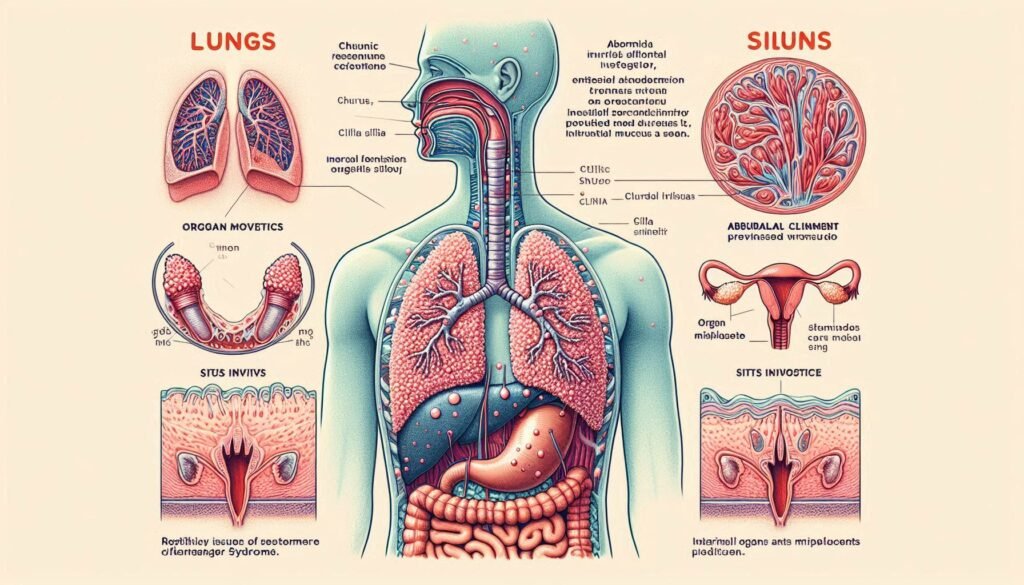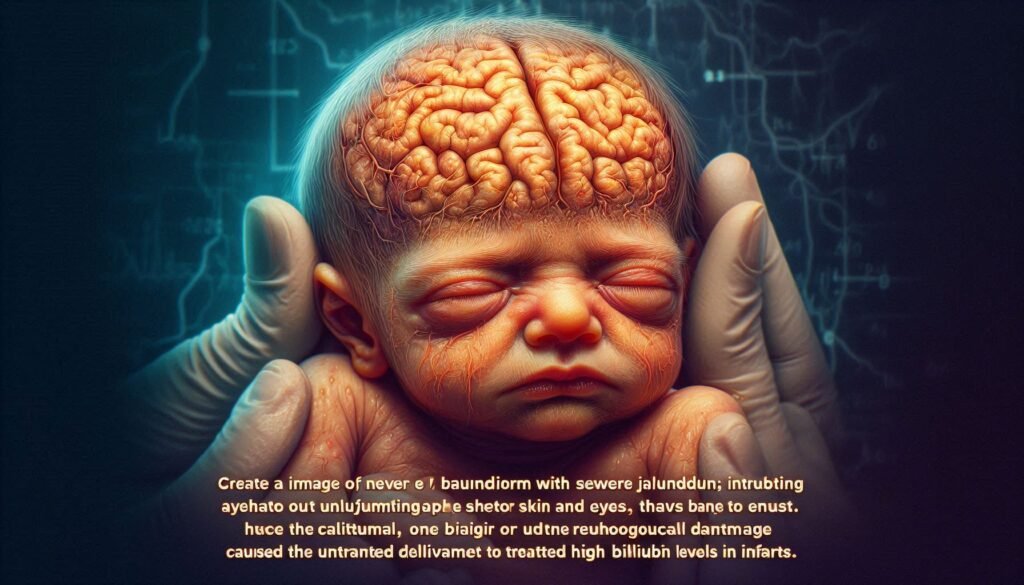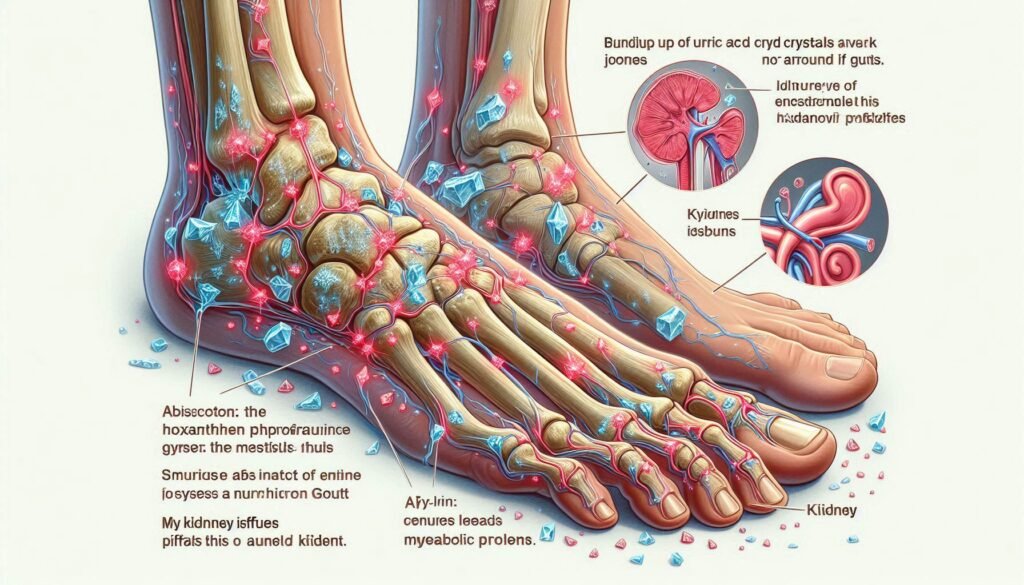Kartagener Syndrome is a rare genetic disorder that affects the functionality of cilia, tiny hair-like structures crucial for various bodily functions. Imagine these microscopic organs as diligent workers, sweeping away debris and ensuring everything runs smoothly in your respiratory system and beyond. When cilia malfunction due to Kartagener Syndrome, it can lead to a host of health challenges—from chronic respiratory issues to unusual organ positioning.
In this article, we will explore the intricate relationship between ciliary dysfunction and health complications associated with Kartagener Syndrome. We’ll delve into its genetic roots, common symptoms, diagnostic methods, treatment strategies, and the everyday realities faced by those living with this condition. Join us on this journey to unravel the complexities surrounding Kartagener Syndrome and discover insights that could make a significant difference in understanding or managing it.

Kartagener Syndrome: Unraveling the Primary Ciliary Dyskinesia Triad
Kartagener Syndrome is part of a broader condition known as primary ciliary dyskinesia (PCD). This syndrome is characterized by a triad of symptoms: chronic respiratory infections, situs inversus, and infertility. Each aspect reflects the underlying dysfunction of cilia throughout the body.
Chronic respiratory infections occur because cilia play an essential role in clearing mucus and pathogens from airways. When they fail to function properly, individuals often experience persistent sinusitis or bronchiectasis.
“What Triggers Fibromyalgia Syndrome? Pain Management Guide”
Situs inversus refers to the mirrored positioning of internal organs. This anomaly arises during embryonic development when dysfunctional cilia interfere with normal organ placement, leading to unique challenges for affected individuals over time.
Genetic Foundations: Inheritance Patterns and Mutated Genes
Kartagener Syndrome is primarily caused by mutations in genes that are crucial for ciliary function. The most commonly implicated gene is DNAH5, which encodes a protein needed for the proper movement of cilia. Mutations in this and other related genes disrupt normal ciliary activity.
“Why Does Fahr’s Syndrome Cause Brain Calcification?”
This disorder follows an autosomal recessive inheritance pattern. This means that both parents must carry a mutated copy of the gene for their child to be affected. If only one parent carries the mutation, they will not exhibit symptoms but can pass it on.
Genetic testing can help identify specific mutations in individuals suspected of having Kartagener Syndrome. Understanding these genetic foundations aids in diagnosis and management strategies tailored to each patient’s needs.
Embryonic Development: How Ciliary Dysfunction Affects Organ Positioning
Cilia play a crucial role during embryonic development, influencing the left-right asymmetry of organ placement. In healthy embryos, cilia create fluid flows that help establish where organs should be positioned.
“How Does Felty’s Syndrome Affect Arthritis Patients?”
However, in individuals with Kartagener Syndrome, defective ciliary function disrupts this process. This dysfunction can lead to situs inversus or other malformations. Organs may develop on the opposite side of where they typically reside.
The misplacement can impact various bodily functions and contribute to complications later in life. Understanding how ciliary dysfunction affects organ positioning is vital for early diagnosis and management strategies for those impacted by this syndrome.
Respiratory Manifestations: Chronic Sinusitis and Bronchiectasis
Respiratory complications are common in Kartagener syndrome, primarily due to cilia dysfunction. Chronic sinusitis arises when the sinuses become inflamed and congested, leading to persistent nasal symptoms. This can significantly affect quality of life, causing headaches and facial pain.
Bronchiectasis is another critical manifestation where the airways become abnormally widened. This results from recurrent infections and inflammation over time. Patients often experience a chronic cough with sputum production.
“What Are The Signs of Fetal Alcohol Syndrome? Prevention Guide”
Both conditions stem from ineffective mucociliary clearance, which fails to remove pathogens effectively. As a result, patients face increased susceptibility to respiratory infections and require ongoing management strategies for relief.
Situs Inversus: When Organs are Mirrored
Situs inversus is a fascinating condition where the internal organs are mirrored from their normal positions. For individuals with Kartagener Syndrome, this occurs due to primary ciliary dyskinesia affecting embryonic development.
The prevalence of situs inversus in these patients varies, but it’s estimated that around 50% may experience this unique organ arrangement. While some might think it leads to health complications, many people live healthy lives without even realizing they have it.
“How Does Fragile X Syndrome Affect Learning & Development?”
However, those with situs inversus can face challenges during medical procedures or imaging studies. Awareness among healthcare providers is crucial for accurate diagnosis and treatment planning in affected individuals.
Fertility Issues in Kartagener Syndrome: Causes and Management
Individuals with Kartagener Syndrome often face fertility challenges due to ciliary dysfunction. In males, impaired sperm motility results from abnormal cilia structure, making it difficult for sperm to reach the egg. This can lead to infertility issues.
In females, the condition may also impact reproductive health. Ciliary defects in the fallopian tubes can hinder the transport of eggs or embryos, complicating conception.
“What Causes Galloway-Mowat Syndrome in Children?”
Management strategies include assisted reproductive technologies like in vitro fertilization (IVF), which bypasses some of these anatomical barriers. Additionally, counseling and support are crucial for couples navigating their fertility journey amid these challenges related to Kartagener Syndrome.
Diagnostic Journey: From Clinical Suspicion to Genetic Confirmation
The diagnostic journey for Kartagener Syndrome often begins with clinical suspicion. Physicians look for common symptoms such as chronic respiratory issues, recurrent sinus infections, and situs inversus. A thorough medical history is essential to identify any familial patterns.
Once initial symptoms are noted, patients may undergo various tests including imaging studies and pulmonary function tests. These help in assessing lung health and structural abnormalities associated with ciliary dysfunction.
Genetic confirmation is the final step. Testing for mutations in genes like DNAH5 or BBS4 can solidify the diagnosis of Kartagener Syndrome. This genetic testing provides clarity not just for treatment but also offers insights into family planning options for affected individuals.
Imaging Studies: X-rays, CT Scans, and Their Role in Diagnosis
Imaging studies play a crucial role in diagnosing Kartagener Syndrome. X-rays are often the first step, helping to identify structural abnormalities in the chest and sinuses. They can reveal issues like bronchiectasis or chronic sinusitis commonly associated with this condition.
CT scans provide more detailed images, allowing for a comprehensive evaluation of lung structure and function. These advanced imaging techniques can detect subtle changes that might not be visible on standard X-rays.
Additionally, CT scans help assess organ placement, especially when situs inversus is suspected. This information is vital for developing effective treatment plans tailored to an individual’s unique health needs.
Nasal Nitric Oxide Measurement: A Screening Tool for Kartagener Syndrome
Nasal nitric oxide (nNO) measurement is an emerging screening tool for Kartagener Syndrome, particularly useful in identifying primary ciliary dyskinesia. Individuals with this condition often have reduced levels of nNO due to dysfunctional cilia that impair mucosal function.
The test is non-invasive and simple, requiring patients to exhale into a device that measures the concentration of nitric oxide in their breath. Lower-than-normal levels may indicate underlying ciliary dysfunction associated with Kartagener Syndrome.
This diagnostic approach complements traditional methods and can prompt further investigation when combined with clinical symptoms. Early detection allows for timely management strategies aimed at improving respiratory health and overall quality of life.
Electron Microscopy: Visualizing Ciliary Ultrastructure
Electron microscopy is a powerful tool for studying the ultrastructure of cilia. It provides high-resolution images that reveal the intricate details of these hair-like projections. For individuals suspected of having Kartagener Syndrome, this technique can be crucial in confirming ciliary dysfunction.
By examining ciliary structure at the molecular level, researchers can identify abnormalities in the arrangement and movement of microtubules. These insights help to elucidate how dysfunctional cilia lead to various health complications associated with Kartagener Syndrome.
Additionally, electron microscopy aids in differentiating between different types of primary ciliary dyskinesia by highlighting distinct structural defects. This specificity enhances diagnostic accuracy and informs treatment strategies tailored to individual needs.
Treatment Strategies: Managing Respiratory Complications
Managing respiratory complications in Kartagener Syndrome requires a multifaceted approach. Regular monitoring of lung function is essential. This helps to detect any decline early, allowing for timely intervention.
Airway clearance techniques play a crucial role. These methods include chest physiotherapy and the use of devices like oscillatory PEP (positive expiratory pressure) masks. They help mobilize mucus, making it easier to expel and reducing infection risk.
In some cases, bronchodilators or inhaled corticosteroids may be prescribed to alleviate symptoms and improve airflow. Antibiotics are often necessary during acute infections to prevent further complications. Tailored strategies can significantly enhance quality of life for those affected by this condition.
Physiotherapy and Airway Clearance Techniques
Physiotherapy plays a crucial role in managing Kartagener Syndrome. It focuses on improving lung function and promoting effective airway clearance. Regular sessions help patients learn techniques to expel mucus, reducing the risk of infections.
Airway clearance techniques include postural drainage and chest physiotherapy. These methods encourage mucus movement from the lungs toward the throat, where it can be coughed out more easily. Utilizing devices like oscillating positive expiratory pressure (PEP) helps enhance these processes.
Incorporating breathing exercises strengthens respiratory muscles, enhancing overall lung capacity. Personalized physiotherapy plans empower individuals with skills to manage their condition effectively while improving their quality of life.
Surgical Interventions: When Conservative Management Isn’t Enough
Surgical interventions for Kartagener Syndrome may become necessary when conservative management fails to control severe complications. Patients often face persistent respiratory issues, such as chronic sinusitis and bronchiectasis, that can significantly impact their quality of life.
In cases where airway obstruction occurs or significant lung damage is present, procedures like bronchoscopy or even lung surgery might be considered. These surgeries aim to remove blockages and improve airflow, allowing patients to breathe easier.
Additionally, corrective surgical options may address anatomical abnormalities caused by situs inversus. Such interventions help restore normal function and reduce the risk of further complications related to organ positioning.
Reproductive Technologies for Fertility Preservation
Individuals with Kartagener Syndrome often face fertility challenges due to ciliary dysfunction. This can lead to issues such as obstructed fallopian tubes in women and reduced sperm motility in men. As a result, reproductive technologies play an essential role for those wanting to conceive.
In vitro fertilization (IVF) is a common option that helps bypass some of these natural barriers. Techniques like intracytoplasmic sperm injection (ICSI) can enhance the chances of successful fertilization, especially when male factors are at play.
Additionally, fertility preservation methods, such as egg or sperm freezing, allow individuals the opportunity to maintain reproductive options for future use. These advancements empower many living with Kartagener Syndrome on their family-building journey.
Living with Kartagener Syndrome: Daily Challenges and Adaptations
Living with Kartagener Syndrome presents unique daily challenges. Individuals may experience chronic respiratory issues, which can make routine activities feel daunting. Simple tasks like climbing stairs or walking long distances might require extra breaks and careful planning.
Adaptations in lifestyle are essential for managing symptoms effectively. Many find it beneficial to incorporate regular physiotherapy sessions into their schedules. This helps maintain lung function and reduce mucus buildup, providing relief from discomfort.
Additionally, creating a supportive environment is crucial. Family members and friends can play an active role by understanding the condition’s impact on health and offering assistance when needed, fostering a more manageable daily life.
Psychological Impact: Coping with a Chronic Condition
Living with Kartagener Syndrome can take a toll on mental health. Individuals often face anxiety and depression due to the unpredictability of their symptoms. Chronic conditions can lead to feelings of isolation, as friends and family may not fully understand their experiences.
Support from healthcare professionals is essential. Counseling or therapy can provide coping strategies tailored to individual needs. Group therapy also offers a space for shared experiences, which fosters connection and understanding among patients.
Mindfulness practices like meditation or yoga can help alleviate stress. Engaging in hobbies or activities that bring joy plays a vital role in maintaining emotional well-being amidst daily challenges posed by the syndrome’s effects.
Pediatric Considerations: Early Detection and Intervention
Early detection of Kartagener Syndrome in pediatric patients is crucial. Parents should be aware of key symptoms such as chronic cough, frequent respiratory infections, and nasal congestion. These signs can often be mistaken for common childhood ailments.
Timely intervention plays a significant role in managing the condition’s impact on health. Regular check-ups with healthcare providers who understand ciliary dysfunction are essential. They can monitor lung function and address any complications early on.
Parents may also need to advocate for their children within the healthcare system. This ensures that necessary tests and referrals to specialists occur promptly, paving the way for effective management strategies tailored to each child’s needs.
Transitioning to Adult Care: Ensuring Continuity of Treatment
Transitioning from pediatric to adult care is crucial for individuals with Kartagener Syndrome. This process often involves shifting from a specialized pediatric team to adult healthcare providers who may not be as familiar with the condition. Ensuring that physicians understand the complexities of ciliary dysfunction is essential.
Patients should start this transition early, ideally in their late teens. This proactive approach allows time for education about their health needs and treatment strategies. Establishing relationships with new doctors can help ease anxiety during this change.
Continuity of treatment must remain a priority throughout this period. Regular follow-ups, maintaining medication regimens, and addressing any emerging issues will support better health outcomes as they enter adulthood.
Latest Research: Gene Therapy and Personalized Medicine Approaches
Recent advances in gene therapy are promising for individuals with Kartagener Syndrome. Researchers are exploring techniques to correct the underlying genetic mutations that lead to ciliary dysfunction. This approach aims to restore normal ciliary function, potentially alleviating symptoms.
Personalized medicine is also gaining traction in treating this condition. By analyzing a patient’s genetic makeup, tailored treatment plans can be developed. These may include specific medications or therapies suited to an individual’s unique genetic profile.
Clinical trials are ongoing, testing various strategies and their effectiveness. As knowledge expands, future treatments may revolutionize how we manage Kartagener Syndrome and improve quality of life for those affected by it.
Support Networks and Resources for Kartagener Syndrome Patients
Support networks play a crucial role for those affected by Kartagener Syndrome. Connecting with others who share similar experiences can offer emotional relief and practical advice. Online forums, local support groups, and social media communities provide platforms to ask questions and share insights.
Organizations dedicated to primary ciliary dyskinesia often host events, workshops, and informational resources tailored for patients and their families. These resources can help patients navigate the complexities of their condition while providing educational materials on management strategies.
Additionally, speaking with healthcare providers about available resources is essential. They can guide you towards reputable organizations that focus on respiratory health or genetic disorders. Building a solid support system fosters resilience in facing the unique challenges associated with Kartagener Syndrome.


